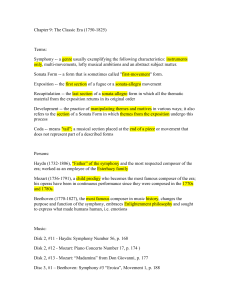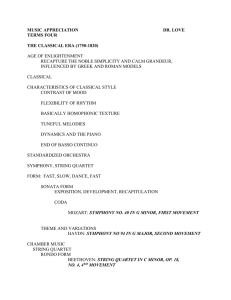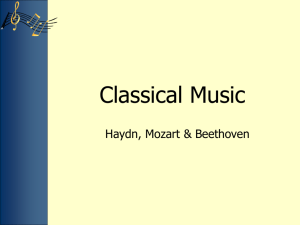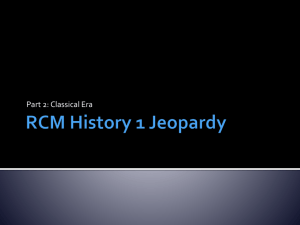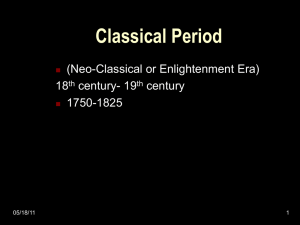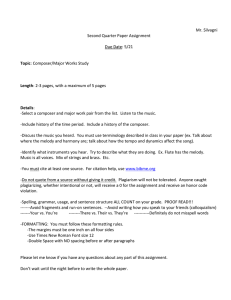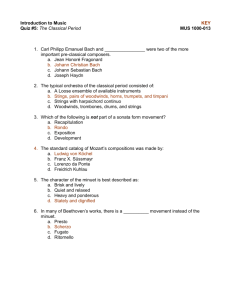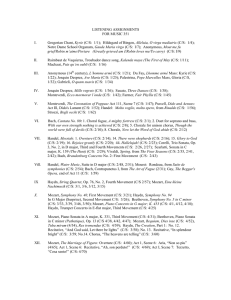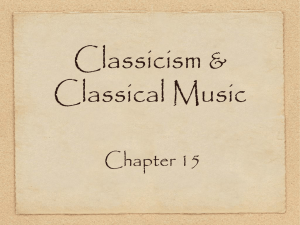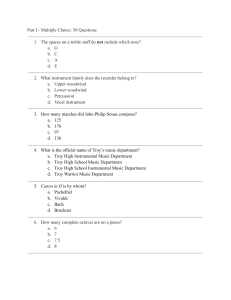Classical Period 1750 – 1820 Three generations of composers: Joseph Haydn, W. A. Mozart, Ludwig van Beethoven
advertisement
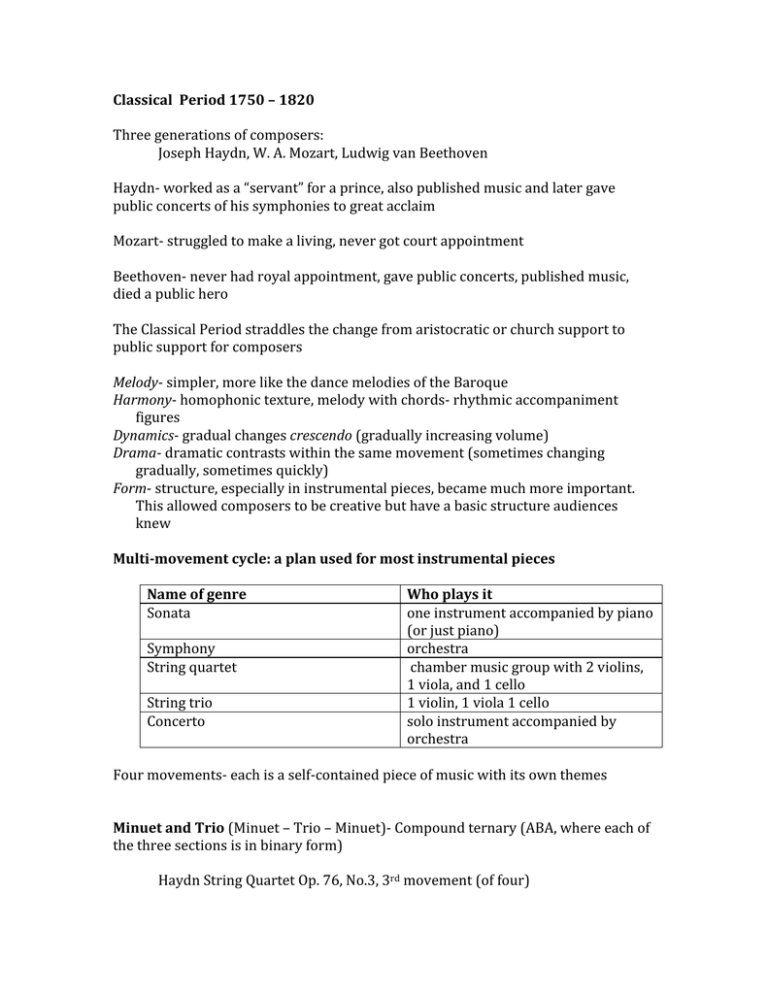
Classical Period 1750 – 1820 Three generations of composers: Joseph Haydn, W. A. Mozart, Ludwig van Beethoven Haydn‐ worked as a “servant” for a prince, also published music and later gave public concerts of his symphonies to great acclaim Mozart‐ struggled to make a living, never got court appointment Beethoven‐ never had royal appointment, gave public concerts, published music, died a public hero The Classical Period straddles the change from aristocratic or church support to public support for composers Melody‐ simpler, more like the dance melodies of the Baroque Harmony‐ homophonic texture, melody with chords‐ rhythmic accompaniment figures Dynamics‐ gradual changes crescendo (gradually increasing volume) Drama‐ dramatic contrasts within the same movement (sometimes changing gradually, sometimes quickly) Form‐ structure, especially in instrumental pieces, became much more important. This allowed composers to be creative but have a basic structure audiences knew Multi­movement cycle: a plan used for most instrumental pieces Name of genre Who plays it Sonata one instrument accompanied by piano (or just piano) Symphony orchestra String quartet chamber music group with 2 violins, 1 viola, and 1 cello String trio 1 violin, 1 viola 1 cello Concerto solo instrument accompanied by orchestra Four movements‐ each is a self‐contained piece of music with its own themes Minuet and Trio (Minuet – Trio – Minuet)‐ Compound ternary (ABA, where each of the three sections is in binary form) Haydn String Quartet Op. 76, No.3, 3rd movement (of four) Mozart: Symphony No. 40, 3rd movement (of four) Sonata­allegro (Exposition, Development, Recapitulation) Mozart: Symphony No. 40, 1st movement (of four) Mozart: Symphony No. 40, 2nd movement (of four) Mozart: Symphony No. 40, 4th movement (of four) Rondo‐ ABACADA… Haydn Trumpet Concerto 3rd movement (out of three) Theme and Variations Beethoven: Variations on “God Save the King” Mozart: Clarinet Quintet 4th movement (out of four) Cadenza‐ improvisation by a solo instrument to delay a cadence Beethoven: Fifth Symphony follows the multi‐movement plan, but increased drama Motive‐ three short notes followed by a long note, shows up in disguised form in the third and fourth movements (this is new) Opera As with Baroque opera, it consists of a series of separate numbers Instrumental (overture) Recitatives (accompanied by just keyboard or by the orchestra) Arias, duets, larger ensembles, etc. Don Giovanni Comic and serious elements
